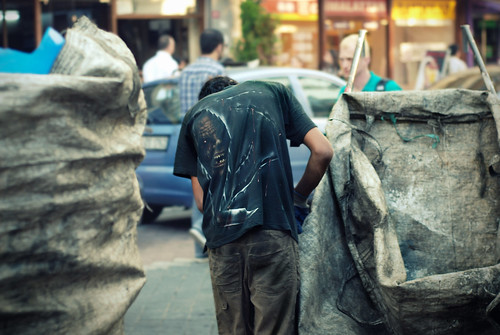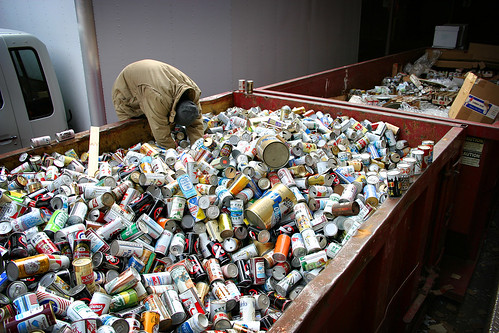While the vast majority of my research is in water governance, and more specifically on wastewater and sanitation, I have always had an interest in solid waste. In fact, at the beginning of my PhD, I was more interested (and did more research) on hazardous waste and municipal garbage than I did on wastewater. In the past 18 months, I have been lucky to come back to the field of Discard Studies because (a) I have become interested in the cross-national and cross-regional variation in informal waste recycling practices that exists amongst regions and nations, and (b) I am doing a collaborative project on electronic waste governance across the US-Mexico border with Dr. Kate O’Neill at University of California Berkeley (thank you UC-MEXUS CONACyT for seed funding!)
Last year, I did fieldwork on informal waste picking in Uruguay, Argentina, Japan, Mexico, the United States and Canada. I was interested in understanding whether there was any variation in organizational and operational practices of recyclers. Admittedly, my findings are necessarily preliminary as there are many scholars who have studied each country’s informal waste pickers in more depth than I could possibly have. Mainly, I was interested in undertaking in some observation during my field research and examining those practices and comparing them across countries and regions.
I’m extremely interested in the informal recycling sector for various reasons. For one, I’ve always been keen to understand their work practices and routines and how their working conditions could have potentially negative and detrimental effects on their health. But at the same time, I recognize that waste pickers play a role in the garbage management field. Given that waste picking involves separation and recycling thereby reducing waste, by all accounts waste pickers are in fact agents of environmental improvement.Therefore, one of the questions I seek to answer is whether we can provide better working conditions and maintain reasonable health standards for these “dumpster divers”.
Amongst the many differences (and divergences) I found in how waste pickers behave in different countries is the location of waste recycling. In many cities in Mexico, I observed that scavengers open trash bags located outside individual households and separate the recyclables from general trash. In Uruguay, Canada, Argentina and Japan, I saw these “dumpster divers” separating the recyclables at specific containers (dumpsters). The more I delved into the field research, I found fewer and fewer waste pickers at the landfill.
Comparatively speaking, this is NOT the case in African and Asian countries, from the published research I have read. Generally, in Africa and Asia, most of the picking occurs at the landfill site. Location of picking choice thus accounts for enormous variation in degree of exposure to physical attacks, exposure to pollutants and volume of waste picked and separated. I am fascinated by (and currently investigating) the factors that drive choice of picking location.
While commenting on my experiences on the field on Twitter, I had a lovely conversation with other scholars, who while not specialists in my field, offered interesting insights that I plan to pursue as my research progresses. Below our conversation, for my record and your reading pleasure.
@Aranjedeath @raulpacheco And environmental entrepreneurs!
— Sheila Vakharia PhD (@MyHarmReduction) April 14, 2014
@raulpacheco @Aranjedeath I also wonder about 'turf' issues and determining which days and times to swing by. Many factors.
— Sheila Vakharia PhD (@MyHarmReduction) April 14, 2014
@raulpacheco You know, I bet it's safer. Especially for women. I see many older women collecting during the day in neighborhoods as well.
— Sheila Vakharia PhD (@MyHarmReduction) April 14, 2014
@raulpacheco @Aranjedeath I also wonder about 'turf' issues and determining which days and times to swing by. Many factors.
— Sheila Vakharia PhD (@MyHarmReduction) April 14, 2014
Below is the Storify of whatever I could salvage from our conversation.



0 Responses
Stay in touch with the conversation, subscribe to the RSS feed for comments on this post.